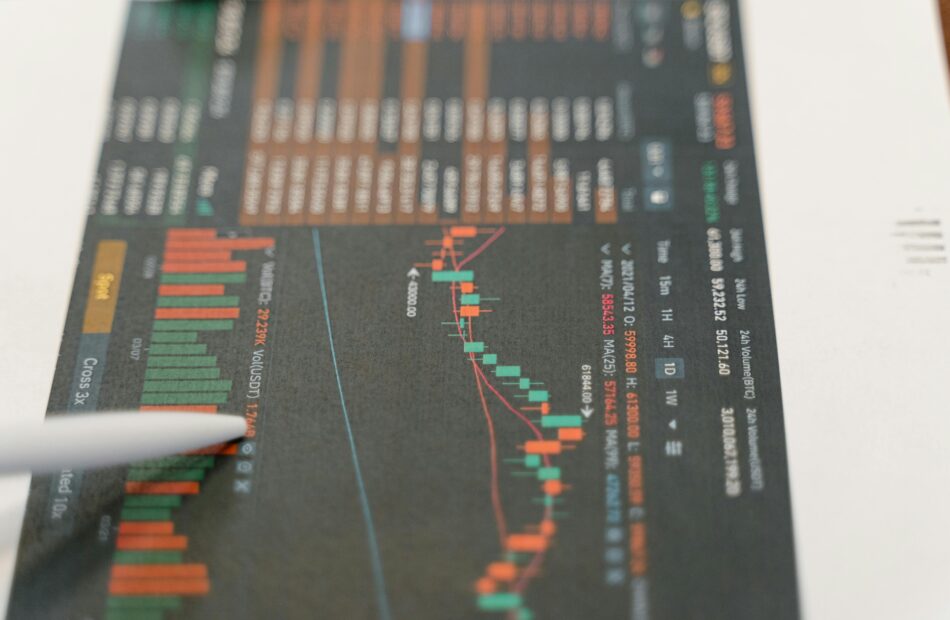Semler Scientific buys another $10M worth of BTC
Semler Scientific has bought approximately $10 million worth of Bitcoin since Feb. 14, the healthcare technology company said in an April 25 statement. The company purchased 111 Bitcoin (BTC) for $10 million at an average price of roughly $90,000 per coin, Semler said. It holds a total of more than 3,300 Bitcoin worth approximately $300 million in aggregate. Semler said its Bitcoin purchases have earned stockholders a Bitcoin yield of 23.5% in the year to date. Bitcoin yield measures the ratio of BTC holdings to outstanding shares, reflecting growing exposure per share for investors. “Semler Scientific uses BTC Yield as a [key performance indicator] to help assess the performance of its strategy of acquiring bitcoin in a manner Semler Scientific believes is accretive to stockholders,” it said. Semler bought 111 BTC since Feb. 14. Source: Eric SemlerThe company said it acquired its Bitcoin treasury for an average price of nearly $89,000. As of April 25, Bitcoin trades at approximately $95,000 per coin, according to data from Cointelegraph. Semler Scientific is a healthcare technology company that develops and sells medical diagnostic products, with a primary focus on detecting chronic diseases. The company has partially financed its Bitcoin purchases by issuing roughly $125 million in new stock, it said. Semler also announced plans to raise $75 million through the private offering of convertible senior notes in January. Corporations are among the biggest Bitcoin buyers. Source: BitcoinTreasuries.NET Related: Bitcoin, showing ‘signs of resilience’, beats stocks, gold as equities fold — BinanceCorporate Bitcoin buyingIn 2024, Bitcoin’s surging price pushed Michael Saylor’s Strategy (formerly MicroStrategy) up more than 350%, according to data from FinanceCharts. Strategy’s success has inspired dozens of other companies, such as Semler, to start accumulating Bitcoin treasuries. Public companies are now among the largest institutional Bitcoin holders. As of April 25, corporate Bitcoin holdings are worth approximately $71 billion in the aggregate, according to data from BitcoinTreasuries.NET.Strategy is still the largest corporate Bitcoin holder, with a treasury worth more than $50 billion. During the week of April 14, Strategy bagged 6,556 Bitcoin for an average price of $84,785 per coin.Among institutional buyers, corporate treasuries still lag exchange-traded funds (ETFs), which cumulatively hold approximately $110 billion in Bitcoin as of April 25, according to Coinglass data. Magazine: Pokémon on Sui rumors, Polymarket bets on Filipino Pope: Asia Express
5 Bitcoin charts predicting BTC price rally toward $100K by May
Key Takeaways:BTC liquidation levels, onchain data, and chart setups converge at the $100K target.Profitability has surged, suggesting a rebound in market confidence.BTC breakout patterns point to $100K as a short-squeeze and euphoria magnet.Bitcoin (BTC) is flashing multiple technical and onchain signals suggesting that a rally to $100,000 is possible by May. Here are five charts making the case for a near-term breakout.BTC double-bottom hints at $100,600 targetBTC’s daily chart has formed a textbook double bottom, confirming a breakout above the neckline resistance at $87,643. The structure projects a measured move to $100,575 or above.BTC/USD daily price chart. Source: TradingViewMomentum indicators like the relative strength index (RSI) support this thesis, staying in bullish territory with more room to expand. Meanwhile, the 50- and 200-day exponential moving averages (EMAs) have flipped into support, offering additional tailwinds.Volume has remained steady post-breakout, showing that buyers are still in control. This setup creates a strong foundation for Bitcoin to push toward $100,600.Bull pennant setup eyes six-figure BTC priceOn the hourly timeframe, BTC consolidates inside a bull pennant following a sharp rally. This pattern indicates temporary indecision before the next leg higher. The target sits near $100,900.BTC/USD hourly price chart. Source: TradingViewThe pennant formed after a steep rise, suggesting that BTC price is likely coiling before resuming its up move. Despite the low volume, the structure remains intact and is supported by strong EMA alignment.A breakout above the pennant’s upper trendline could trigger fresh upside momentum, attracting short-term traders and algorithms targeting round-number breakouts.Bitcoin’s falling wedge breakout targets $102,000The three-day chart shows a completed falling wedge breakout, with the price breaking a key resistance zone near $94,000. The projected move targets $102,270.BTC/USD three-day price chart. Source: TradingViewFalling wedges are typically bullish reversal patterns, and BTC’s clean breakout above the upper trendline adds technical conviction. Price is also riding above the 50-3D EMA, a key trend signal.Volume surged during the breakout, suggesting strong buyer conviction. The $94,000-95,000 resistance is now capping Bitcoin’s upside attempts. Breaking it means BTC could deliver its complete measured move toward $100,000 quickly.Binance heatmap shows liquidity magnet at $100KLiquidation data reveals a thick cluster of short liquidations around the $100,000 level. These positions often act like a magnet, pulling the price toward them as market makers hunt for liquidity.BTC/USDT three-month liquidation heatmap. Source: CoinGlass If BTC continues climbing, it will pressure short sellers who may be forced to exit, triggering a cascade of buy orders.Related: $635M liquidated in 24H as trader predicts $100K Bitcoin short squeezeLiquidity maps often front-run price. With such dense activity near six figures, the path of least resistance appears upward in the near term.Bitcoin profitability increases post-breakoutAs of April 23, 87.3% of Bitcoin’s circulating supply was in profit, up from 82.7% when BTC last traded near $94,000 in early March, according to Glassnode data. The increase indicates that a significant portion of the Bitcoin supply changed hands at lower levels during the March correction, reflecting a fresh wave of accumulation.BTC percent supply in profit. Source: GlassnodeHistorically, when the Percent Supply in Profit remains above 90% for an extended period, markets tend to enter a euphoric phase. With profitability now nearing that threshold, bullish sentiment continues to build.Combined with bullish chart structures and concentrated short liquidity overhead, BTC remains positioned for a potential move toward $100,000 by May. This article does not contain investment advice or recommendations. Every investment and trading move involves risk, and readers should conduct their own research when making a decision.
North Korean hackers set up 3 shell companies to scam crypto devs
A subgroup of the North Korea-linked hacker organization Lazarus set up three shell companies, two in the United States, to deliver malware to unsuspecting users.The three sham crypto consulting firms — BlockNovas, Angeloper Agency and SoftGlide — are being used by the North Korean hacker group Contagious Interview to distribute malware through fake job interviews, Silent Push threat analysts said in an April 24 report.Silent Push senior threat analyst Zach Edwards said in an April 24 statement to X that two shell companies are registered as legitimate businesses in the US.“These websites and a huge network of accounts on hiring / recruiting websites are being used to trick people into applying for jobs,” he said.“During the job application process an error message is displayed as someone tries to record an introduction video. The solution is an easy click fix copy and paste trick, which leads to malware if the unsuspecting developer completes the process.”During the sham job interview, an error message is displayed, requiring the user to click, copy, and paste to fix it, which leads to the malware infection. Source: Zach EdwardsThree strains of malware — BeaverTail, InvisibleFerret and Otter Cookie — are being used according to Silent Push.BeaverTail is malware primarily designed for information theft and to load further stages of malware. OtterCookie and InvisibleFerret mainly target sensitive information, including crypto wallet keys and clipboard data.Silent Push analysts said in the report that hackers use GitHub job listing’s and freelancer websites to look for victims, among others. AI used to create fake employees The ruse also involves the hackers using AI-generated images to create profiles of employees for the three front crypto companies and stealing images of real people.“There are numerous fake employees and stolen images from real people being used across this network. We’ve documented some of the obvious fakes and stolen images, but it’s very important to appreciate that the impersonation efforts from this campaign are different,” Edwards said.“In one of the examples, the threat actors took a real photo from a real person, and then appeared to have run it through an AI image modifier tool to create a subtly different version of that same image.”Related: Fake Zoom malware steals crypto while it’s ‘stuck’ loading, user warnsThis malware campaign has been ongoing since 2024. Edwards says there are known public victims. Silent Push identified two developers targeted by the campaign; one of them reportedly had their MetaMask wallet compromised. The FBI has since shut down at least one of the companies.“The Federal Bureau of Investigation (FBI) acquired the Blocknovas domain, but Softglide is still live, along with some of their other infrastructure,” Edwards said.Source: Zach EdwardsAt least three crypto founders have reported in March that they foiled an attempt from alleged North Korean hackers to steal sensitive data through fake Zoom calls.Groups such as the Lazarus Group are the prime suspects in some of the biggest cyber thefts in Web3, including the Bybit $1.4 billion hack and the $600 million Ronin network hack.Magazine: Lazarus Group’s favorite exploit revealed — Crypto hacks analysis
Bitcoin's next big resistance is $95K— What will trigger the breakout?
Key takeaways:Spot Bitcoin ETF inflows are at their highest since January 2025.Inflows to exchanges down to levels last seen in December 2016.Bitcoin’s negative funding rates could set up a short squeeze.BTC price is above major moving averages, which can now provide support.Bitcoin’s (BTC) price rose to a new range high at $94,700 on April 23, its highest value since March 2.Several analysts say the next psychological resistance remains at $95,000, and the price might drop to test support levels below.“The $94K–$95K zone is clearly the resistance to beat,” said Swissblock in an April 24 post on X. The onchain data provider asserted that the next logical move for Bitcoin would be a pullback toward the $90,000 zone to gain momentum for a move higher.“The $89K–$90K zone could be next to test bulls, but with BTC’s structure strength, these dips are for buying.”BTC/USD chart. Source: SwissblockPopular Bitcoin analyst AlphaBTC opined that the asset will likely consolidate in the $93,000-$95,000 range “before pushing higher to take liquidity above 100K.”Source: AlphBTCSeveral bullish signs suggest that BTC is well-positioned to break above $95,000 in the following days or weeks.Bitcoin ETF demand reboundsOne factor supporting the Bitcoin bull argument is resurgent institutional demand, reflected by significant inflows into spot Bitcoin exchange-traded funds (ETFs).On April 22 and April 23, spot Bitcoin ETFs saw a net flow totaling $936 million and $917 million, respectively, as per data from SoSoValue.As Cointelegraph reported, these inflows have been the highest since January 2025 and more than 500 times the 2025 daily average.Spot Bitcoin ETF flows. Source: SoSoValueThis trend reflects growing confidence among traditional finance players, as observed by market analysts like Jamie Coutts, who noted global liquidity hitting new all-time highs, historically fueling asset price rallies. Source: Jamie CouttsInstitutional buying creates sustained upward pressure on Bitcoin’s price by absorbing the available supply.Less BTC supply on crypto exchangesThe trend of decreasing Bitcoin exchange inflows continues, suggesting a potential reduction in sell pressure. The total amount of coins transferred to the exchanges has dropped from a year-to-date high of 97,940 BTC on Feb. 25 to 45,000 BTC on April 23, as per data from CryptoQuant. This is reinforced by a reduction in the number of addresses depositing Bitcoin to exchanges, which has been “steadily declining since 2022,” according to CryptoQuant analyst Axel Adler Jr. He highlights that this metric’s 30-day moving average has dropped to 52,000 BTC, a level last seen in December 2016. “This trend is bullish in itself,” as it represents a fourfold reduction in coin sales over the last three years, the analyst said, adding:“Essentially, this represents growing HODL sentiment, which significantly reduces selling pressure, creating a foundation for further growth.”Bitcoin exchange depositing address count. Source: CryptoQuantNegative funding rates can fuel BTC rallyBitcoin price has rebounded to levels last seen in early March, but futures trades are not entirely on board yet. Bitcoin’s perpetual futures funding rates remained negative between April 22 and April 23, despite the price rising by 11% over the same period, data from Glassnode shows.Bitcoin perpetual futures funding rates. Source: GlassnodeNegative funding rates imply that shorts are paying longs, reflecting a bearish sentiment that can fuel a short squeeze as prices rise.Related: Bitcoin is the ‘cleanest shirt in the dirty laundry’ — BitfinexIn an April 22 post on X, CryptoQuant contributor Darkfost highlighted a similar divergence in Bitcoin’s price and Binance funding rates. “Whereas BTC continues to climb, funding rates on Binance have turned negative, currently sitting at around -0.006 at the time of writing,” Darkfost explained.He added that this is a rare occurrence, which has historically been followed by significant rallies, like Bitcoin’s surge from $28,000 to $73,000 in October 2023, and from $57,000 to $108,000 in September 2024.Bitcoin funding rates on Binance. Source: CryptoQuantIf history repeats itself, Bitcoin may rally from the current levels, breaking above the resistance at $95,000 toward $100,000.Bitcoin trades above the 200-day SMAOn April 22, Bitcoin price rose above a key level: the 200-day simple moving average (SMA) currently at $88,690, fueling a marketwide recovery.The last time the BTC price broke above the 200-day SMA, it experienced a parabolic move, rallying 80% from $66,000 on Oct. 14, 2024, to its previous all-time high of $108,000 on Dec. 17. This level should provide significant support as Bitcoin trades above this key trendline. But if it doesn’t hold, the following levels to watch will likely be $84,379, the 50-day SMA, and the $80,000 psychological level.BTC/USD daily chart. Source: Cointelegraph/TradingViewFor the bulls, the resistance levels at $95,000 and $100,000 are the primary ones to watch. Rising above that would pave the way for a run toward the Jan. 20 all-time high above $109,000.This article does not contain investment advice or recommendations. Every investment and trading move involves risk, and readers should conduct their own research when making a decision.
What is quantitative easing, and how does it work?
Quantitative easing (QE), explained Quantitative easing (QE) is a non-traditional monetary policy tool used by central banks, particularly when interest rates are already low and cannot be reduced further. It was popularized during the 2008 global financial crisis when traditional monetary tools, like lowering interest rates, were insufficient to stimulate economic growth. The main goal of QE is to boost the economy by increasing the money supply. This is achieved by encouraging banks to lend more and making borrowing cheaper for consumers and businesses. When central banks implement QE, they purchase government bonds or other securities from the market, injecting cash into the financial system. Even though people sometimes say QE is like “printing money,” it’s not the same as making new physical cash. Instead, it increases the amount of digital money — meaning the balances held in bank accounts — in the economy. This isn’t cryptocurrency; it’s regular money created by the central bank and used by banks to lend more, which helps boost spending and investment.QE can also raise the prices of assets like stocks and bonds because the extra money looking for returns drives demand higher. Governments also used QE during the COVID-19 pandemic to help keep the economy stable and support growth. How does quantitative easing work? To understand how QE functions behind the scenes, it’s important to look at the step-by-step mechanics that drive this policy. QE doesn’t work through a single action — it operates through a chain of events that begins with the central bank and eventually influences everyday economic activity. Here’s how the process typically unfolds:Asset purchases: Central banks buy government securities, such as treasury bonds, from banks and financial institutions.Increasing money supply: These purchases flood the financial system with liquidity.Lowering interest rates: With more cash on hand, banks lower interest rates, making loans cheaper.Boosting lending and spending: Cheaper loans mean more business investments and consumer spending, which are key drivers of economic growth. Quantitative easing in practice: Historical examples Quantitative easing isn’t just a theory — it’s been used by major central banks during times of economic trouble. Here are some real-world examples of how it worked:United States (2008–2014; 2020): The global financial crisisAfter the 2008 housing market crash, the US economy was in a deep recession. To help:The Federal Reserve launched three rounds of QE (QE1, QE2, QE3).It bought trillions of dollars in government bonds and mortgage-backed securities.This helped lower interest rates, supported lending, and boosted the stock market.When COVID-19 shut down economies worldwide, the US Fed acted quickly:It reintroduced QE, buying $120 billion per month in bonds at its peak.It aimed to keep borrowing costs low and support businesses and households.Japan (2001–2006, and again from 2013 onward): Fighting deflationJapan was dealing with low inflation and sluggish growth for years. The Bank of Japan (BoJ):Started using QE before most other countries.Bought large amounts of government bonds and later included stocks and real estate investment trusts.Eurozone (2015–2022): Post-debt crisis recoveryThe European Central Bank (ECB) introduced QE after a debt crisis hit Greece, Italy and Spain:The ECB bought government bonds from eurozone countries to bring down borrowing costs.This supported weaker economies and aimed to prevent deflation (falling prices). How quantitative easing impacts crypto markets Quantitative easing doesn’t just affect traditional financial markets — it also impacts the cryptocurrency market. When central banks inject more cash into the economy, some of that money flows into alternative assets like Bitcoin (BTC) and altcoins, driving up their prices. This surge in liquidity often boosts asset prices across the board, including cryptocurrencies, as more money becomes available for investments.Additionally, during QE, fiat currencies may lose value due to increased money supply, leading some investors to seek out cryptocurrencies as a hedge against inflation or currency devaluation. Bitcoin, in particular, is often seen as a store of value similar to gold. For example, in 2020, during the COVID-19 pandemic, the US Federal Reserve launched aggressive QE. At the same time:Bitcoin was trading under $5,000 in March 2020.By late 2021, it had soared past $60,000.Key factors behind Bitcoin’s growth during QE include rising inflation fears and low interest rates pushing investors toward alternative assets. Among these, a major driver could be the search for a store of value outside traditional finance. Thus, QE can indirectly contribute to crypto market booms by influencing investor sentiment and liquidity.The flip side: When QE ends, crypto may sufferWhen central banks end QE or start raising interest rates (tightening policy), liquidity is reduced, and borrowing becomes more expensive. This can lead to pullbacks in risk assets, including crypto.For example, in 2022, the Fed began quantitative tightening to combat inflation. Bitcoin dropped from around $47,000 in March to below $17,000 by December — a decline likely driven by investors shifting to safer assets and reduced risk appetite due to rising interest rates. Quantitative easing (QE) vs. quantitative tightening (QT): Key differences Quantitative easing (QE) and quantitative tightening (QT) are two opposing monetary policies used by central banks. QE involves expanding the money supply by purchasing assets such as government bonds, which injects cash into the economy to stimulate growth. Its main purpose is to lower interest rates and encourage lending when the economy is struggling.QT is the process of contracting the central bank’s balance sheet. It involves selling assets or letting them mature, reducing the money supply. The goal of QT is to cool down an overheating economy and prevent inflation from rising too quickly.The key difference between QE and QT lies in their impact on the central bank’s balance sheet: QE expands it, whereas QT contracts it. In terms of market effects, QE tends to drive asset prices up, whereas QT can lead to lower asset prices and higher interest rates. Both policies significantly influence inflation and market stability.Are the Fed tapering and quantitative easing the same?No, tapering and QE are not the same — but they are connected.Quantitative easing is when the Federal Reserve actively buys assets, such as government bonds, to inject money into the economy and lower interest rates.Tapering is when the Fed slows down those asset purchases — it’s the beginning of the end of QE, not a reversal. Is the Fed still tightening or easing in 2025? As of April 2025, the US Federal Reserve is navigating a complex economic landscape characterized by persistent inflationary pressures and slowing economic growth. In response, the Fed has maintained its benchmark interest rate within the 4.25%–4.50% range, signaling a cautious approach to monetary policy adjustments.While the Fed has not fully transitioned to an easing stance, it has begun to moderate its QT efforts. Specifically, starting in April, the Fed reduced its monthly runoff of Treasury securities from $25 billion to $5 billion while continuing to allow $35 billion in mortgage-backed securities to mature without reinvestment.Looking ahead, the Federal Open Market Committee (FOMC) projects the possibility of two interest rate cuts later in 2025, contingent upon economic conditions. This projection reflects the Fed’s attempt to balance the dual mandates of controlling inflation and supporting employment amid uncertainties, including the impact of recent tariff policies. Pros and cons of quantitative easing Quantitative easing boosts growth and lowers borrowing costs, but overuse can fuel inflation, asset bubbles and long-term policy challenges.ProsQE helps boost economic activity by increasing the money supply and encouraging lending and investment.By purchasing government bonds, QE drives down interest rates, making borrowing cheaper for businesses and consumers.By injecting liquidity into the economy, QE helps boost demand and supports price stability, preventing deflation.ConsAn excessive increase in the money supply can devalue the currency and push inflation higher.Easy money can drive up asset prices, leading to overvalued stocks, bonds or real estate.QE adds to national debt, making it harder for central banks to manage inflation or interest rates in the future.In the end, quantitative easing remains a powerful but double-edged tool: capable of stabilizing economies in crisis yet carrying long-term risks that must be carefully managed to avoid repeating past imbalances.
XRP futures open interest surges by 32% — Are traders bullish or bearish?
Key Takeaways: XRP has gained 25% since April 7, and its open interest has risen by 32%.Positive spot market activity contrasts with a neutral futures funding rate, highlighting a tug-of-war between traders.Analysts still have double-digit price targets for XRP.XRP’s (XRP) price fell to a year-to-date low of $1.61 on April 7, but has gained 25% over the past two weeks as the broader crypto market recovered and XRP open interest surged. XRP futures open interest. Source: CoinGlassThe altcoin’s open interest surged 32% from $3.14 billion to $4.13 billion between April 21 and 23, signaling the return of derivatives traders. Futures OI increasing alongside the price indicates a bullish sentiment, but data from the Velo painted a different picture. Based on the negative aggregated premium on open interest, the XRP futures market continued to bid against an XRP price rise. The funding rate remained near 0, implying a neutral stance between the bulls and bears. XRP aggregated premium, spot tape and open interest chart. Source: VeloThe aggregated spot tape cumulative volume delta became positive in April. This indicator measures the net difference between aggressive buy and sell trades across various exchanges. When it turns green and rises above zero, it indicates increasing buying pressure, with market buy trades surpassing sell trades.Despite rising futures interest, the data suggests XRP’s price remains caught in a tug-of-war between bullish spot market activity and bearish perpetual futures.Related: Price predictions 4/23: BTC, ETH, XRP, BNB, SOL, DOGE, ADA, LINK, AVAX, SUIIs XRP destined for double-digits?Following XRP’s price pump, Sistine Research, a crypto investment community, posted a bold prediction for XRP, forecasting a long-term target between $33 and $50. The prediction is based on a higher time frame (HTF) symmetrical triangle that mirrors 2017’s 2,600% rally. The platform suggested that an optimistic target may drive prices as high as $77-$100.XRP price target by Sistine Research. Source: X.comFor context, XRP is currently valued at $2.23 with a market cap of $131 billion. A $33 target increases the market cap to ~$2 trillion (1,400 %+), which is more than Bitcoin’s current market cap. From a lower-time frame (LTF) perspective, XRP shows an inverse head-and-shoulders pattern, which could potentially test the resistance range between $2.50 and $2.67. The resistance range also coincides with the Fibonacci extension levels drawn from the neckline’s base to the head’s lowest point. Although the relative strength index (RSI) is nearing overbought territory, suggesting a potential pause in price movement at the current range.XRP 4-hour chart. Source: Cointelegraph/TradingViewRelated: XRP Ledger Foundation spots ‘crypto stealing backdoor’ in code libraryThis article does not contain investment advice or recommendations. Every investment and trading move involves risk, and readers should conduct their own research when making a decision.
Riot Platforms secures $100M ‘Bitcoin-backed’ loan from Coinbase
Riot Platforms has used its massive Bitcoin stockpile as collateral to secure a $100 million credit facility from Coinbase as the cryptocurrency miner eyes continued expansion. The $100 million loan from Coinbase’s credit arm marks Riot’s “first Bitcoin-backed facility,” CEO Jason Les said in an April 23 statement.Les said the credit line will be used to fund general corporate operations and support the company’s “strategic growth initiatives.”Source: Riot PlatformsThe credit line is scheduled to mature in one year’s time, but could be extended for an additional year. The loan carries an annual interest payment of at least 9%, based on the current upper limit of the federal funds rate plus 4.5%. Crucially, the funding amount “will be secured by a portion of [Riot Platforms’] total Bitcoin holdings,” the company said. Riot owns the third-largest corporate Bitcoin (BTC) treasury, with 19,223 BTC on its books as of April, according to industry data. At current prices, its Bitcoin holdings are valued at roughly $1.8 billion.As Cointelegraph reported, Riot acquired $500 million worth of Bitcoin in December. Earlier in the month, the company unveiled plans to raise $500 million through a private bond offering to fund additional BTC purchases. Related: Bitcoin miner Bitfarms secures up to $300M loan from MacquarieRIOT stock ralliesShares of Riot Platforms, which trade on the Nasdaq stock exchange under the ticker symbol RIOT, rose more than 8% on April 23 amid a broad rally for Bitcoin miners and the overall stock market.However, like other Bitcoin mining stocks, RIOT has struggled since the start of the year, weighed down by the global trade war and falling cryptocurrency prices.After its latest rally, RIOT stock has pared its losses for the year to -24.6%. Source: Yahoo FinanceIndustry research has tracked a strong correlation between mining stocks and Bitcoin’s price going back to at least 2020.Currently trading at around $93,000, Bitcoin is down approximately 15% from its peak following US President Donald Trump’s inauguration. Over the same period, RIOT shares have fallen by more than 40%.Despite share price volatility, Riot Platforms is coming off a record year of earnings and revenue, having successfully bolstered its operations after the Bitcoin halving.In 2024, the company generated $376.7 million in sales and $109.4 million in net income. The company will hold its next earnings call on May 1, covering the quarter ending March 31. Related: BTC miners adopted ‘treasury strategy,’ diversified business in 2024: Report
Bitcoiners should be cautious over rally as stablecoin indicator lags: Analyst
Bitcoin’s 12% rally over the week and a surge in related exchange-traded fund inflows have analysts thinking it could soon reach $100,000, but one crypto analyst has said to temper hopes as a key indicator is still giving mixed signals.“Given that our stablecoin minting indicator has yet to return to high-activity levels, we remain cautious about the sustainability of the current Bitcoin rally,” 10x Research head of research Markus Thielen said in an April 23 markets report.Stablecoin absence may limit Bitcoin upsideThielen explained that a measured move from the falling wedge pattern, which traders perceive as a potential bullish reversal signal, shows that Bitcoin (BTC) may reclaim $99,000.He added, however, that “the absence of strong stablecoin inflows raises questions about follow-through.”Markus Thielen is watching the stablecoin minting indicator before confirming the Bitcoin uptrend is sustainable. Source: 10x ResearchBitcoin was trading at $93,133 at the time of writing, up 11.42% over the past seven days, according to CoinMarketCap. Thielen told Cointelegraph that stablecoin inflows “tend to correlate strongly with stickier money, while an increase in futures leverage could simply mean that fast traders are taking advantage of a quick move higher.” Spot Bitcoin ETF inflows surge, a true “demand-led rally”It comes as spot Bitcoin ETFs in the US posted inflows of $912.7 million on April 22, the highest level since Jan. 17, according to Farside data.Swyftx lead analyst Pav Hundal told Cointelegraph that the inflows suggest “this is a true, demand-led rally. Not just a hot flash of excited futures traders moving price.”“If the news headlines finally quieten, we could break new highs sooner than everyone thinks. A fast track to $100,000 looks plausible, but things change quickly in a Trump presidency.”Thielen said if uncertainty continues to decline, “a further acceleration could provide the liquidity needed to support a more sustained rally.”Related: Bitcoin risks 10%-15% BTC price dip after key rejection near $89KThe crypto market has experienced volatility and broader financial markets since US President Donald Trump imposed tariffs in early February. However, Trump’s recent comments have traders speculating that he’s softening his stance on the trade war, with some seeing this as bullish for markets.Thielen said the $95,000 price level is a key resistance level for Bitcoin and a “potential trigger point for short-stop liquidations.”He said it could push Bitcoin’s price higher if market strength continues.Magazine: Former Love Island star’s tips on how to go viral in crypto: Van00sa, X Hall of FlameThis article does not contain investment advice or recommendations. Every investment and trading move involves risk, and readers should conduct their own research when making a decision.
Mixed sentiment as crypto funds see modest $6M inflows — CoinShares
Cryptocurrency exchange-traded products (ETPs) showed signs of recovery last week with minor inflows, after shedding more than $1 billion in outflows in the previous two weeks.Crypto investment products saw inflows of $6 million during the week of April 14–18, reflecting mixed investor sentiment, CoinShares reported on April 22.“While the week began with minor inflows, stronger-than-expected US retail sales figures mid-week likely triggered outflows of $146 million,” CoinShares’ head of research James Butterfill wrote.Weekly crypto ETP flows since late 2024. Source: CoinSharesTotal assets under management (AUM) in crypto ETPs edged up 1.4% from $129 billion as of April 11 to $131 billion on April 18.All US Bitcoin ETFs are red in April so farAccording to the report, BlackRock’s iShares exchange-traded funds saw the biggest inflows last week at $182 million, while major issuers like Fidelity saw $123 million of outflows from the issuer’s crypto ETPs.Bitwise was among a few of the US issuers that saw inflows in its crypto ETPs, totaling $24 million, while the European issuer 21Shares saw bigger inflows at $37 million.Flows by issuer (in millions of US dollars). Source: CoinSharesEven with minor inflows, all US crypto ETP issuers are currently in the red month-to-date. European-based 21Shares was the only issuer that had maintained $28 million of inflows in April.Related: BlackRock reports $3B in digital asset inflows during Q1Year-to-date, BlackRock’s iShares ETFs are solid with more than $3 billion of inflows, with the majority of issuers being in red, except for Proshares with $340 million of inflows and Cathie Wood’s ARK with $19 million YTD.XRP stood out with $37.7 million inflowsAsset-wise, Ether (ETH) saw the largest ETP outflows among other cryptocurrencies last week, totaling $26.7 million.XRP (XRP) saw significant inflows of $37.7 million, standing out as the biggest gainer among other crypto ETPs.Flows by asset (in millions of US dollars). Source: CoinSharesBitcoin saw minor outflows of $6 million, extending April outflows to $894 million. The asset still has $541 million of ETP inflows YTD, the biggest inflows before Ether and XRP, totaling $215 million and $214 million YTD, respectively.Magazine: Altcoin season to hit in Q2? Mantra’s plan to win trust: Hodler’s Digest, April 13 – 19
Gold is money, says Peter Schiff, as price hits $3,500 ATH
As gold reached new highs above $3,500, Peter Schiff — a prominent gold advocate and Bitcoin critic — argued that the precious metal is money, fueling backlash from the crypto community.“Gold is not just any commodity, it’s money,” Schiff wrote in an X post on April 22 after gold prices briefly broke above $3,500.While praising gold, Schiff sounded the alarm about the state of the economy, emphasizing that gold’s abnormal rally in the past few weeks holds negative implications for the US dollar.Source: Peter Schiff“This is the end of the US dollar’s dominance. Life in America is about to change in ways few can imagine,” he stated.Gold is up 31% YTD, USD is down 9%Schiff’s comments came amid gold futures surging to a record-breaking $3,500 on April 22, while spot gold has yet to touch the milestone after reaching $3,498 on Tuesday, according to TradingView.Since the beginning of 2025, spot gold has gained as much as 31.6% of value, while its one-year price is up more than 44%.Spot gold (XAU) price chart since Jan. 1, 2025. Source: TradingViewThe US dollar has seen a notable decline year-to-date, with the US Dollar Index (DXY) tumbling more than 9% in 2025, based on TradingView data.Community questions gold as “money”Schiff’s observations on the state of the US dollar in the context of gold’s rally have received some traction on social media, but many commentators have questioned whether the term “money” corresponds to gold.Some crypto community members specifically highlighted that gold fails to serve as a viable payment method, one of the four foundational functions of money.“I shaved a bit off my gold bar at Starbucks this morning. They accepted it as payment. First time in a while,” cryptocurrency advocate Mike Alfred responded in Schiff’s X thread, referring to gold being rarely used as a method of payment.Related: Jack Dorsey pushes Signal to adopt Bitcoin paymentsUnlike gold, cryptocurrencies like Bitcoin (BTC) are able to serve the payment use case, many posters stressed.“I paid for my haircut last week in Bitcoin,” one commentator said, adding:“Merchants won’t accept gold because how do they test if it’s real?”Amid the ongoing gold rally, the narrative of gold versus “digital gold” Bitcoin has been on the rise. According to Cathie Wood, a major Bitcoin bull and ARK Invest founder, Bitcoin is a “much bigger idea than gold,” and has a potential to gain from gold’s $23 trillion market.Others believe that gold and Bitcoin should not be seen as competitors because the assets are different in their nature and have different missions.Magazine: Altcoin season to hit in Q2? Mantra’s plan to win trust: Hodler’s Digest, April 13 – 19









